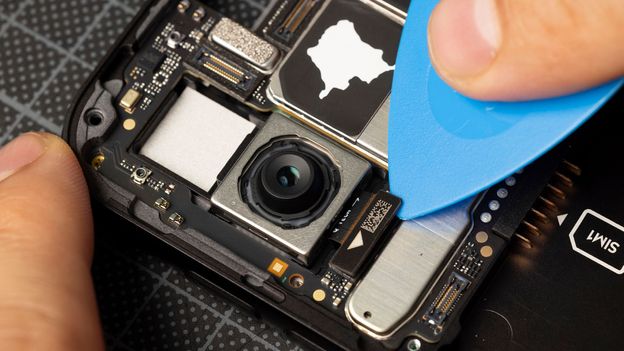Fairphone has created a smartphone that owners can repair themselves - This sustainable smartphone aims to reduce global electronic waste::In a bid to reduce global electronic waste, Fairphone has created a smartphone that owners can repair themselves. What makes its technology so sustainable?



It’s inefficient for energy, but it’s efficient at saving charging cords. My girlfriend goes through one lightning cord a year.
A phone only needs like 5 watt hours a day max, which is a cost of 365 * $0.08 * 0.005 = $0.15 a year at local prices
I feel like having to replace charging cords is an Apple issue specifically.
I’m horrified by the amount of time my wife had to replace her Mac charger because the cord was breaking.
I don’t think I ever had to replace the cord on any of my laptop, replacing the charger because the cord is breaking has never been a consideration before.
I’ve found that breaking cables is a personal issue. I still have an old usb Xbox 360 controller for pc gaming from when I owned an xbox. My partner has destroyed cables for laptops, hairdryers, headphones in less than 12 months.
Some cables are objectively worse than others (macbook chargers I’m looking at you) but a modicum of care generally is enough to make sure they last without too much hassle.
I work retail, people come in with broken Apple cables more than almost any other cable.
Surprisingly these people are also often very picky with getting the Apple-Branded cables as well, even USB C
I have only had one charging cable “break” (the cable sheath separated from the plug sheath, it was still usable and had no exposed wires since they all had their own additional sheath) since I stopped using Apple/Samsung phones as my daily driver.
I think the issue is crappy cables that are then super expensive so that they can continue milking you for every penny you are worth.
Literally any cable other than Apples will not break like that.
I’ve had the same 100w tb3 cable for 4 years. It charges all of my devices and gets a ton of use.
Wireless charging is still a little gimmicky imo. It has only come in useful when my friend’s iPhone needed to mooch some charge off of my phone.
The headphone jacks are pointless to include bc they’re so horribly underpowered. USBc headphones or a dongle is 10x better.
Bought a pixel 6 after breaking my oneplus 6t.
I absolutley love wireless charging. Its so good i wouldnt want another phone without it. No abuse on the usbc port which is something i definately damaged on previous phones. Just me being clumsy and knocking it off the table with the cord plugged in still.
My experience anyway. Love it
How does the wireless charger connect to power again?
You don’t need to replug it daily. Usually the cord doesn’t break, actually, it’s the connector at the end of the cord